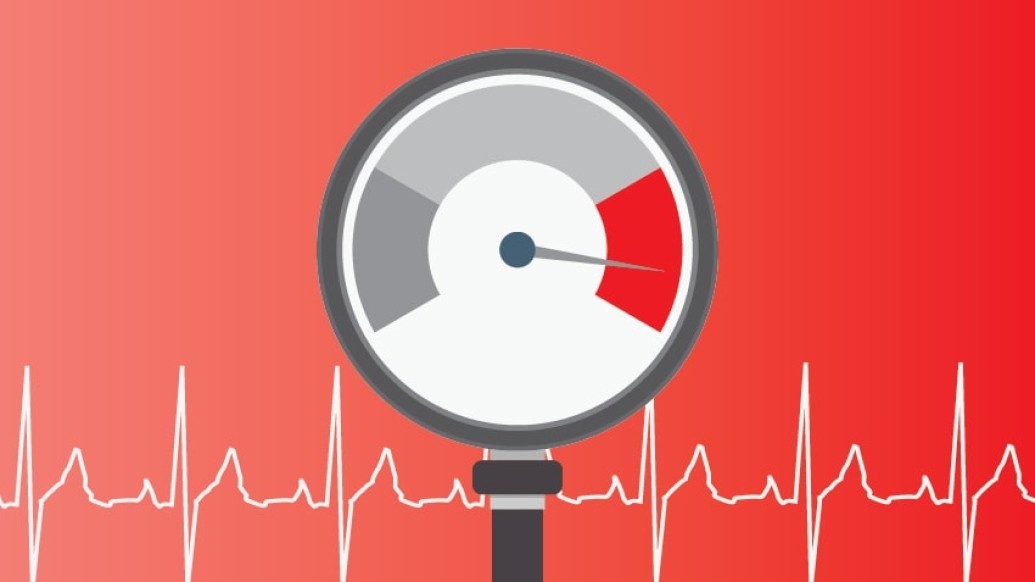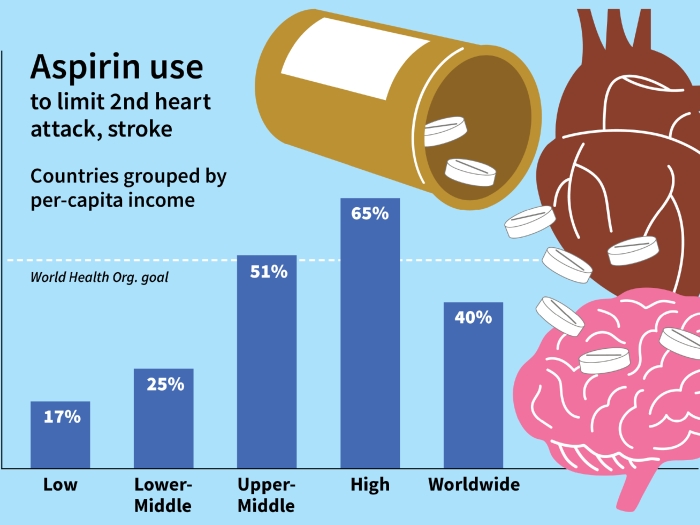A Michigan Medicine hypertension specialist, who was part of the team behind the newly released high blood pressure recommendations, explains what’s changed.
7:00 AM
Author |

Nearly half of Americans will now be told they have high blood pressure, but one Michigan Medicine cardiologist says that designation is actually a good thing.
MORE FROM THE LAB: Subscribe to our weekly newsletter
Kenneth Jamerson, M.D., a hypertension specialist at the University of Michigan's Frankel Cardiovascular Center, served on the writing committee for the new hypertension guidelines, released at the American Heart Association's Scientific Sessions 2017. According to the AHA, the percentage of U.S. adults with hypertension jumped from 32 percent under the old guidelines to 46 percent under the new ones.
The new recommendations remove the "prehypertension" designation, instead identifying anyone with a blood pressure of 130/80 or higher as hypertensive. The previous benchmark for hypertensive was 140/90.
"Millions of Americans have always had an increased risk of cardiovascular disease from elevated blood pressure," says Jamerson, who presented the blood pressure goals and targets at the AHA's Scientific Sessions. "But the term 'prehypertension' may not have adequately conveyed this risk. This new strategy is to identify more people with the intent of getting their attention, but only give drug therapy to those at high risk."
The writing committee reviewed many large trials, considering a tremendous amount of evidence to support the new guidelines. "We always knew systolic blood pressure readings above 120 mmHg carried some cardiovascular risks. Now, we've better stratified that risk, focusing more attention on those whose blood pressure is greater than 130 mmHg," Jamerson says.
'Earlier intervention'
The changes don't mean everyone who is now classified as hypertensive should start taking medication. Most will not, Jamerson says. Rather, risk assessments are used for those with elevated blood pressure (now above 120/80 mmHg).
SEE ALSO: How Text Messaging Could Help Tackle High Blood Pressure in At-Risk Patients
"We determined that both hypertension and either previous cardiovascular disease or increased risk for cardiovascular disease inform the need for treatment with anti-hypertensive medication," Jamerson says. "Those who have less than a 10 percent risk of stroke and heart disease are given instruction on diet and exercise rather than medication."
Jamerson says the overall effort is to educate people and encourage more conversation between physicians and their patients about modifying risk factors.
"We want to give patients more knowledge about what their blood pressure means and approaches to mitigate a rise in blood pressure over the years," he says. "We think earlier intervention is usually a better strategy."
Changes in the clinic
Michigan Medicine cardiologist Melvyn Rubenfire, M.D., who reviewed the guidelines, says every physician treating blood pressure should keep them at his or her desk.
"Among the most meaningful recommendations is that simple, quick office blood pressures should not be used to determine treatment goals and treatment choices," he says.
Jamerson says the setup of the guideline document is meant to encourage regular referencing. The 15 chapters each function separately, and the full document is easily searchable and filled with hyperlinks. Chapters cover causes of hypertension, measurement of blood pressure, nonpharmacological interventions, patient evaluation and more.
"Prior to this, there were many different numbers to remember, including various cutoffs for the elderly and those with diabetes or comorbidities," he says. "Now, we're hoping having one number to shoot for is more convenient and straightforward and works for almost all comorbidities. By introducing the risk stratification, we could use this same number for everyone."
Risk calculations help the physician and patient determine whether lifestyle changes or drug therapy are necessary. They incorporate factors such as cholesterol, age and blood pressure level in an equation.
"Any organized practice can do the risk stratification, whether by using the equation for each patient or setting electronic medical records to perform the calculation," Jamerson says. Still, he acknowledges it may be burdensome for some rural offices without as much electronic assistance to get started. "The strategy, then, is only the people who need medication because of their increased risk will get it, whereas the old guidelines were based just on blood pressure measurement only."
Hypertension rates in minority communities
Jamerson and the writing team summarize the increased prevalence of hypertension in minority communities in chapter 10 of the guidelines, describing treatment challenges including barriers to adoption of lifestyle recommendations and access to medical care.
Particularly for African-Americans, mean blood pressure is higher than in other groups, Jamerson says, so these updated guidelines will likely have greater impact for African-American patients.
"I think that the overall impact will be positive," Jamerson says. "The hope is the early detection and identification of people with higher risk of hypertension-related diseases would be a potent strategy for risk modification."
None of the authors of the new guidelines have any financial conflicts related to the research.

Explore a variety of healthcare news & stories by visiting the Health Lab home page for more articles.

Department of Communication at Michigan Medicine
Want top health & research news weekly? Sign up for Health Lab’s newsletters today!





